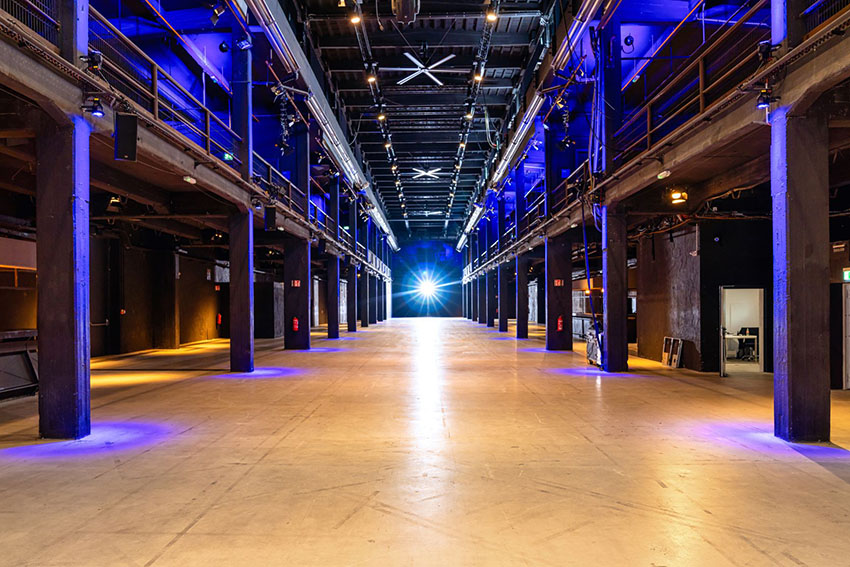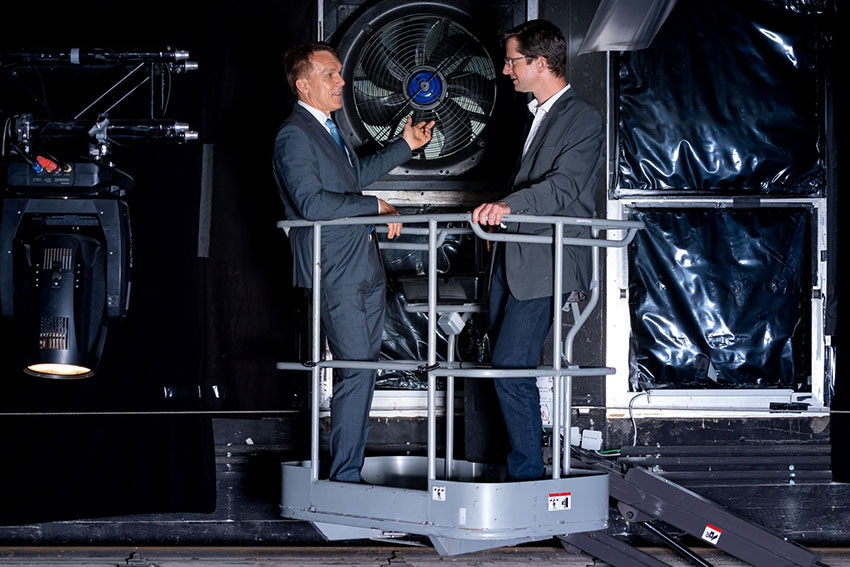CEO Dr. Michael Gordon promises a reduced risk of coronavirus infection at events. His company runs the renowned Berlin event location “Motorwerk” where events such as Germany’s Next Top Model and new car presentations by Porsche and Daimler have been staged. “In order to massively reduce the risk of coronavirus infections from aerosols, we are able to achieve an enormous increase in the air quality without any disruptive noise.” This is thanks to a sophisticated ventilation concept using the know-how and products of the fan manufacturer Ziehl-Abegg; it was in these very halls that this global company ‘grew up’ more than 110 years ago and is the namesake for this event location.
Since the start of the Covid-19 pandemic, the Motorwerk has primarily staged streaming events (e.g. with the Minister of Labour and Social Affairs Hubertus Heil) – but because of the current conditions the number of participants has always been very small. The first event was held in August 2020 with more than 200 guests. Normally, the Motorwerk can stage meetings or events for more than 1000 people. “The focus now is on social distancing, hygiene rules and, in particular, air quality,” explains Dr. Gordon. “In the latest event, 250 people spent several hours in the Motorwerk. Although the fans were operating in the immediate vicinity of the guests they could not be heard,” said Dr. Gordon, in praise of the system.

“The latest generation of biomimetic fans is now operating in the Motorwerk,” says Peter Fenkl, CEO of the motor and fan manufacturer Ziehl-Abegg. Fenkl went on to explain that it had been a special challenge and, at the same time, an honour to be involved in the ventilation system in the halls, which the company sees as being very steeped in its own history. The system now uses fans whose noise levels can be kept extremely low – “using designs inspired by nature, such as the owl in flight, we have enhanced the fans to achieve the optimum level in terms of acoustics,” explains Fenkl.
Control via an app on smart phone or tablet
CO2 sensors monitored the air quality and regulated the fans during the event. The ceiling fans provide the air circulation. For the entire duration of the event, the CO2 level in the indoor air was maintained at approximately. 530 ppm. “That equates to almost the same as fresh air,” says Dr. Gordon, referring to a study by the TU Berlin, which considers low CO2 values to be harmless (Risk assessment by the TU Berlin: https://depositonce.tu-berlin.de/handle/11303/11477). The entire system is programmed to be self-regulating but can also be operated manually. Control and monitoring are carried out via an app on smart phone, tablet or PC.
“Design and structural implementation were not easy,” recalls Dr Gordon. This is because the building is a listed historical site. Collaboration between the Monument Protection Authority, the Weißensee Engineering Consortium and Ziehl-Abegg allowed for the development of a building technology concept that does not change the interior or exterior view of the building whilst at the same time being very dynamic.

The air in the building replaced completely twice an hour
The ventilation system consists of the following components: eight axial fans from Ziehl-Abegg (ZN063-ZIL. DG. V7P2), four HVLS ceiling fans (high volume low speed), eight CO2 sensors and a standardised IP-based home control system from LOxone with control software from Smartflix.
The volume of air in the hall is approx. 16,500 cubic metres. Each of Ziehl-Abegg’s built-in axial fans moves up to 6,000 cubic metres of air per hour. Three fans are used for suction and five for the inlet air. This allows the entire air content of the large building to be completely replaced up to twice an hour.
